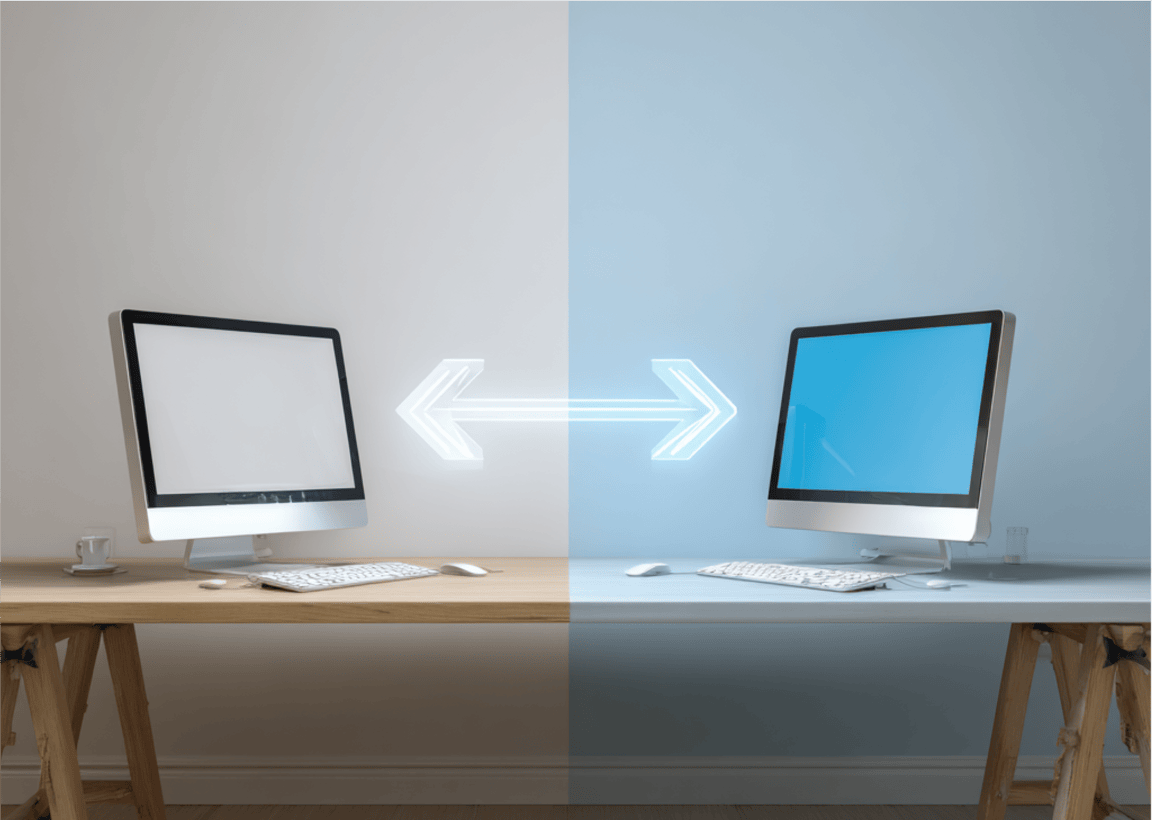What is EDI? Understanding Electronic Data Interchange

Electronic Data Interchange (EDI) is an efficient system that makes modern supply chains work well. It enables organizations to ditch mountains of paper, faxes, and manual data entry.
With EDI, get instant, flawless digital conversations between businesses. It's a standardized, electronic swap of crucial business documents. This includes purchase orders, invoices, and shipping notices. These go directly between computer systems, which is fast and accurate.
Why is EDI Essential for Supply Chains?
For too long, businesses were stuck in a data entry nightmare. Every order, every invoice meant someone typing numbers from one system into another. Errors were inevitable. Delays were standard.
EDI is a game-changer because it automates this entire flow. Data moves through systems and gets translated into a universally understood EDI standard, like ANSI X12 or UN/EDIFACT. Then it travels across a secure network, and lands in your trading partner's system, ready to go. No typing and no mistakes.

What are the Core Components of EDI?
EDI is like a highly efficient secret language, but for business documents. Here's what are involved:
- EDI Standards: These are the rulebooks, the agreed-upon language. Everyone speaks it, so everyone understands. No room for misinterpretation.
- EDI Translators: This software acts as a bridge between your company's internal data and the standardized EDI format. It takes data from systems like your ERP or WMS and converts it into the precise format your trading partners understand. It also works in reverse.
- Communication Networks: The superhighways of data. Whether it's a secure Value Added Network (VAN) or a direct AS2 connection, this is how your digital documents travel, safe and sound.
- Trading Partners: Simply put, these are the other businesses you're doing digital deals with. They're on the same page, ready to connect.
What are the Key Benefits of Using EDI?

EDI doesn't just cut down on paper. It fundamentally reshapes how businesses operate. We're talking about slashing operational costs. No more printing, mailing, or endless data entry.
Speed explodes. What took days now takes minutes. Accuracy skyrockets. It virtually eliminates manual errors that cost real money. To further enhance efficiency and automation, data lake consulting services can help optimize the processing of large data volumes.
Supply chain visibility sharpens. This gives you a clear, real-time picture of inventory, orders, and shipments. This helps manage everything, from vast warehouse stocks to individual parcel management moving through your internal systems.
It also streamlines your mailroom management by automating incoming and outgoing document flows. It means better inventory management, fewer stockouts, and happier customers. For many big players, like major retailers, EDI isn't optional for suppliers. It's a mandate. Get with the program or get left behind.
Where is EDI Most Commonly Applied?

Walk into almost any major industry, and EDI is in the background, making things happen:
- Retail Giants: Orders fly in. Invoices fly out. Shipping notices pinpoint exact deliveries.
- Manufacturing Powerhouses: Raw materials are ordered. Production schedules are tweaked. Finished goods are shipped. It’s all automated.
- Logistics & Transport: Freight instructions, real-time tracking, automated billing. No more guesswork.
- Healthcare Providers: Claims are processed. Patient eligibility is checked. Payments are managed. Efficiency in a life-saving sector.
What Challenges Might You Face with EDI Implementation?
Yes, getting EDI up and running can feel like a big lift initially. There's an investment in software and setup. Integrating it with your existing systems needs careful planning.
But once it's in place, the day-to-day is automated. This frees your team for higher-value tasks like forecasting, demand planning, and supplier collaboration. Managing multiple partners, each with its quirks, can be a challenge. However, the long-term benefits far outweigh the initial hurdles.
Who Should Consider Using EDI?
Basically, any business that moves a significant volume of transactions with other companies. This includes the biggest retail chains and their thousands of suppliers. It includes manufacturers, logistics firms, and even government entities.
If you're looking to eliminate friction, boost speed, and ensure precision in your B2B communications, EDI is the intelligent way forward. Complement the use of EDI with elevated internal package and mail processes. Discover how to enhance your parcel and mailroom management with advanced digital solutions.






